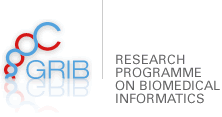
30/05/2019
New approaches of chemical safety assessment discussed between regulatory experts and the researchers of EU-ToxRisk
Press Release; Espoo, 24 May 2019
An international workshop, held in Espoo (Fin), close to the headquarters of the European Chemicals Agency (ECHA), paved the way for a new risk assessment strategy, relying less on animal data, and using multi-dimensional information from many sources in the so-called read-across procedure.
The event took place on 21-22 May 2019 and was organised by EU-ToxRisk, in close collaboration with regulatory representatives from several European agencies (ECHA, EFSA, SCCS), US agencies (NTP, EPA), and other organisations (OECD, Health Canada, NIHS Japan).
EU-ToxRisk - An Integrated European 'Flagship' Program Driving Mechanism-based Toxicity Testing and Risk Assessment for the 21st Century - is a research project receiving funding from the European Union's Horizon 2020 research and innovation programme. Its main goal is to increase confidence in the implementation of non-animal approaches into the regulatory decision-making process for hazard and risk assessment. For this purpose, the project works on the development, evaluation and implementation of animal-free New Approach Methods (NAM) in modern toxicology. GRIB participates on this project, in particular, the PharmacoInformatics group of GRIB is leading the development of computational tools which will facilitate the use of NAM in read accross studies.
One of the most promising new risk assessment strategies is the read-across approach. For read-across, new compounds are assessed by comparison to the toxicological data of other chemicals with similar structural/physicochemical properties.
Although frequently chosen in regulatory submission dossiers, this method often fails to be accepted by regulatory agencies, as the associated uncertainties, e.g. level of similarity among the compounds on toxicokinetics and toxicodynamics behaviour, are perceived as being too large.
In its first three years, the EU-ToxRisk project has addressed this issue by developing a novel read-across approach, introducing the support of NAM-generated (in silico and in vitro) data for reducing those uncertainties. This was now presented to regulators in the workshop "New Approach Method (NAM)-supported read-across: from case studies to regulatory guidance in safety assessment".
While the strategy was strongly welcomed, this may only be a first step towards implementation: 'Getting the science right is not enough', says Matthias Herzler from the German Federal Institute for Risk Assessment (BfR), who claims that 'a comprehensive and accessible way to telling the "read-across story" should also be explored and standardised in order to convince regulatory assessors that NAM-supported read-across is adequate and reliable'.
There is, hence, an obvious need for an advisory document to help a comprehensive submission process of the NAM-assisted read-across regulatory dossiers.
In line with this objective, the overall aim of the workshop in Espoo was to collect scientific and regulatory expert feedback on various read-across scenarios which will serve as input to a EU-ToxRisk advisory report for NAM-supported read-across.
Altogether, a group of more than 60 international experts from industry, academia and regulatory authorities came to Finland to discuss a total of five scientifically advanced project case studies developed within EU-ToxRisk, the OECD/IATA program, and NIHS Japan. The extremely wide spectrum of expertise and different perspectives of the participants led to highly interesting exchanges and answers to where and how NAMs can support a read-across problem formulation, identify areas that contain data gaps, suggest how these gaps can be filled, and finally provide technical guidance on how those steps should be presented in a read-across regulatory dossier.
The planned EU-ToxRisk advisory document targets the broader toxicology community and will contain practical instructions on its applications in different regulatory contexts. It will be complementary to the already published ECHA reporting template for grouping and read-across (ECHA RAAF) and the OECD guidance document for in vitro test method description (OECD GD 211), facing the issue of regulatory acceptance from the point of view of the registrants of NAM-supported read-across dossiers. As such, it will allow to improve the quality of the submission of real read-across cases by registrants and increase the acceptance success rate of non-animal approaches.
The workshop in Espoo received very positive feedback, and Grace Patlewicz from the US EPA for example concluded that 'the EU-ToxRisk workshop was a significant milestone in harvesting the collective experience of those developing and applying read-across approaches with NAMs to help inform updates to existing technical guidance, as well as chart out and coordinate the ongoing opportunities and challenges in assuring scientific confidence in read-across'.
Workshop chair and EU-ToxRisk member Susanne Hougaard Bennekou from the Danish Technical University (DTU) confirmed being 'proud of the success of this crucial event' and 'confident that its results will contribute to trigger a positive change in the regulators' mindset around NAM-based risk assessment'.
* * * * * * * * * * * *
Find out more about EU-ToxRisk at http://www.eu-toxrisk.eu/
For further information please contact:
Prof. Dr. Bob van de Water, Project Coordinator (Leiden University); E-mail: water_b@lacdr.leidenuniv.nl; Tel: +31-71-5276223
Dr. Martijn Moné, Scientific Manager (Leiden University); E-mail: m.j.mone@lacdr.leidenuniv.nl; Tel: +31-71-5276228
EU-ToxRisk Project Office (ARTTIC); E-mail: eu-toxrisk-arttic@eurtd.com; Tel: +33-(0)1-53-94-54-81



